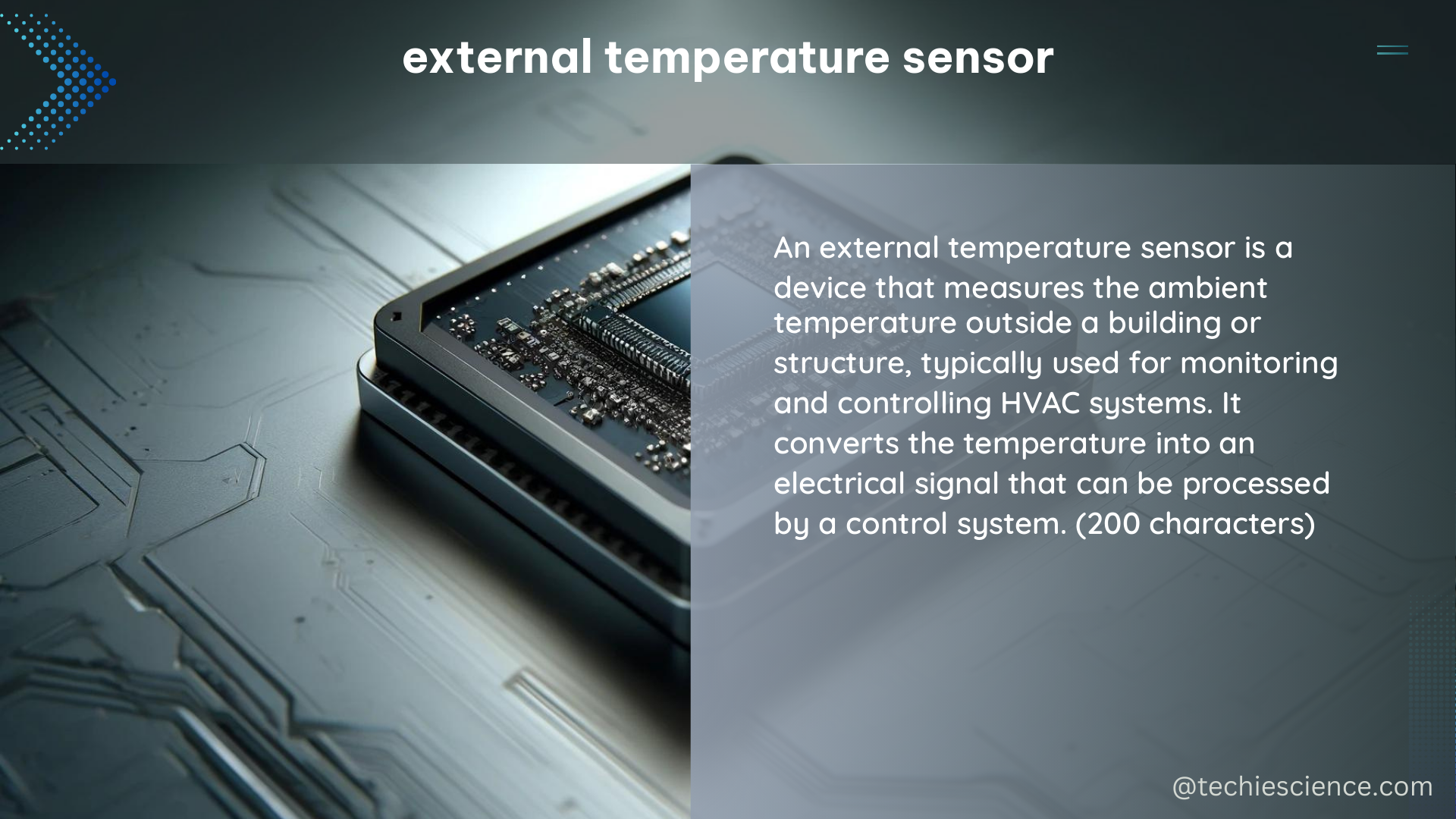External temperature sensors are crucial components in various applications, from consumer electronics to industrial automation. These sensors play a vital role in accurately measuring ambient air temperature, monitoring internal device temperatures, and enabling precise temperature control. In this comprehensive guide, we will delve into the technical specifications, best practices, and considerations for effectively utilizing external temperature sensors.
Understanding the Melexis MLX90632 Infrared Thermometer
The Google Pixel 8 Pro’s external temperature sensor utilizes the Melexis MLX90632 infrared thermometer. This sensor offers an impressive accuracy of ±3°C between -20°C and 85°C, and an even tighter accuracy of ±1°C between 15°C and 45°C. However, it’s crucial to note that the sensor’s accuracy can be influenced by various factors, including:
- Shiny or reflective surfaces
- High humidity
- Interference from other sources
- Emissivity variations
To ensure accurate ambient air temperature measurements, it’s essential to isolate the sensor from heat sources and prevent interference from nearby heat sources.
Precision Digital Temperature Sensors: TMP116 and TMP117

For applications requiring even higher precision temperature measurements, the TMP116 and TMP117 devices from Texas Instruments offer a compelling solution. These pin-compatible, high-precision digital temperature sensors with integrated EEPROM can provide up to ±0.1°C accuracy over the +20°C to +42°C range. These sensors are I2C- and SMBus-interface compatible, allowing for the connection of up to four devices on a single bus.
| Sensor | Accuracy | Temperature Range |
|---|---|---|
| TMP116 | ±0.1°C | +20°C to +42°C |
| TMP117 | ±0.1°C | +20°C to +42°C |
Measuring Internal CPU Temperature
When measuring the internal temperature of a CPU, it’s crucial to consider the sampling time of the internal temperature sensor. To ensure accurate measurements, the sampling time must be at least 5µs. Additionally, it’s important to note that the external conversion result should not be used to compute the internal CPU temperature. Instead, the internal TEMP_SENSOR should be converted while keeping variation on the external sensor.
Temperature Measurement with Thermocouples, RTDs, and Thermistors
Beyond infrared and digital temperature sensors, there are other common temperature measurement technologies, including thermocouples, resistance temperature detectors (RTDs), and thermistors. When working with these sensor types, it’s essential to select the best temperature sensor for the application’s needs and consider the required hardware and software to properly condition, acquire, and visualize temperature measurements.
Regardless of the sensor type, signal conditioning is necessary to ensure accurate and reliable temperature measurements. The measurement hardware can significantly impact the accuracy of the measurements, so it’s crucial to carefully select and configure the appropriate hardware components.
Environmental Factors and Sensor Accuracy
The accuracy of external temperature sensors can be influenced by various environmental factors, such as:
- Ambient temperature
- Humidity
- Airflow
- Proximity to heat sources
- Sensor placement and orientation
To mitigate the impact of these factors, it’s important to carefully consider the sensor’s placement, shielding, and any necessary environmental controls or compensation techniques.
Calibration and Maintenance
Proper calibration and maintenance of external temperature sensors are crucial for maintaining accurate and reliable measurements over time. Periodic calibration, using reference standards, can help ensure that the sensor’s readings remain within the specified accuracy range. Additionally, regular cleaning and inspection of the sensor’s surface can help prevent contamination or damage that could affect its performance.
Conclusion
External temperature sensors are essential components in a wide range of applications, from consumer electronics to industrial automation. By understanding the technical specifications, best practices, and environmental considerations, you can effectively utilize external temperature sensors to achieve accurate and reliable temperature measurements. This comprehensive guide has provided you with the knowledge and insights to master the use of external temperature sensors and optimize their performance in your specific applications.
References
- Reddit Discussion on Google Pixel 8 Pro Temperature Sensor
- Texas Instruments Application Note on Temperature Sensor Accuracy
- STMicroelectronics Community Discussion on Internal Temperature Measurement
- National Instruments Guide on Measuring Temperature with Thermocouples, RTDs, and Thermistors

The lambdageeks.com Core SME Team is a group of experienced subject matter experts from diverse scientific and technical fields including Physics, Chemistry, Technology,Electronics & Electrical Engineering, Automotive, Mechanical Engineering. Our team collaborates to create high-quality, well-researched articles on a wide range of science and technology topics for the lambdageeks.com website.
All Our Senior SME are having more than 7 Years of experience in the respective fields . They are either Working Industry Professionals or assocaited With different Universities. Refer Our Authors Page to get to know About our Core SMEs.